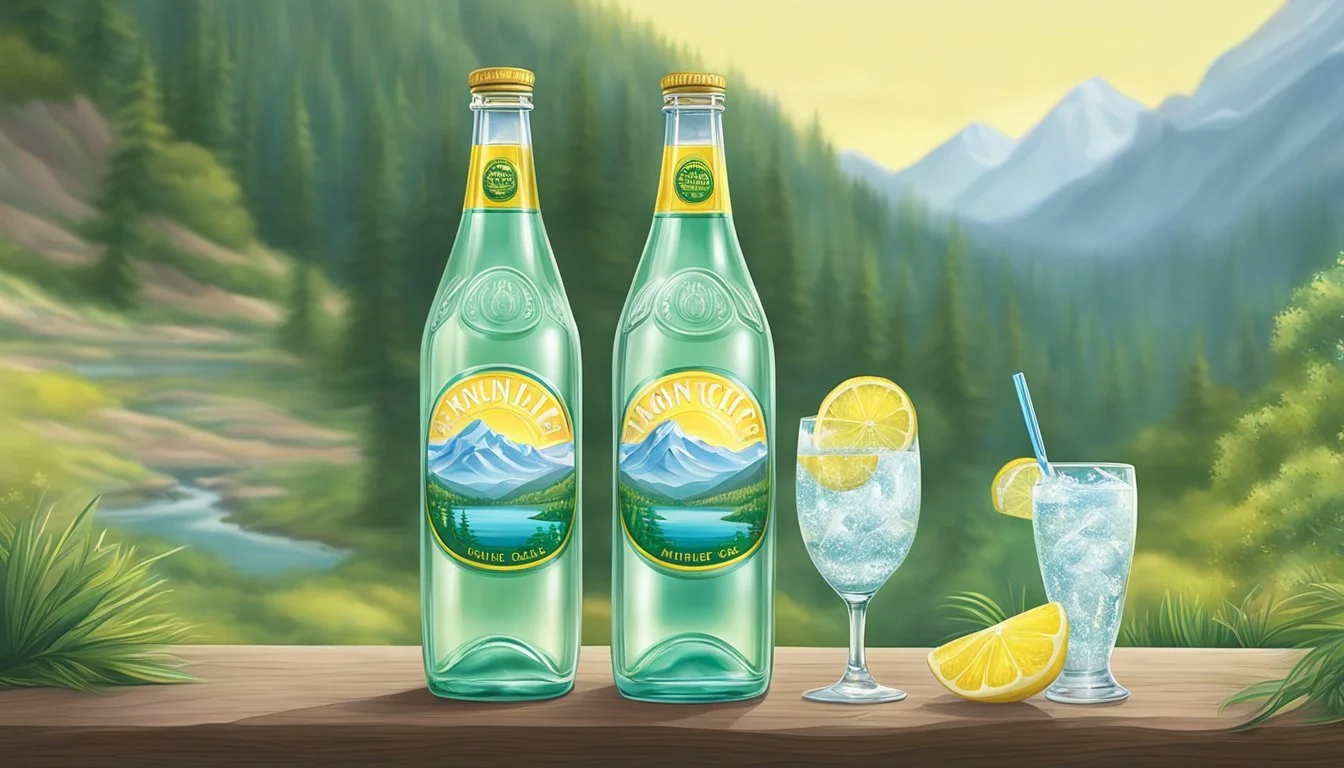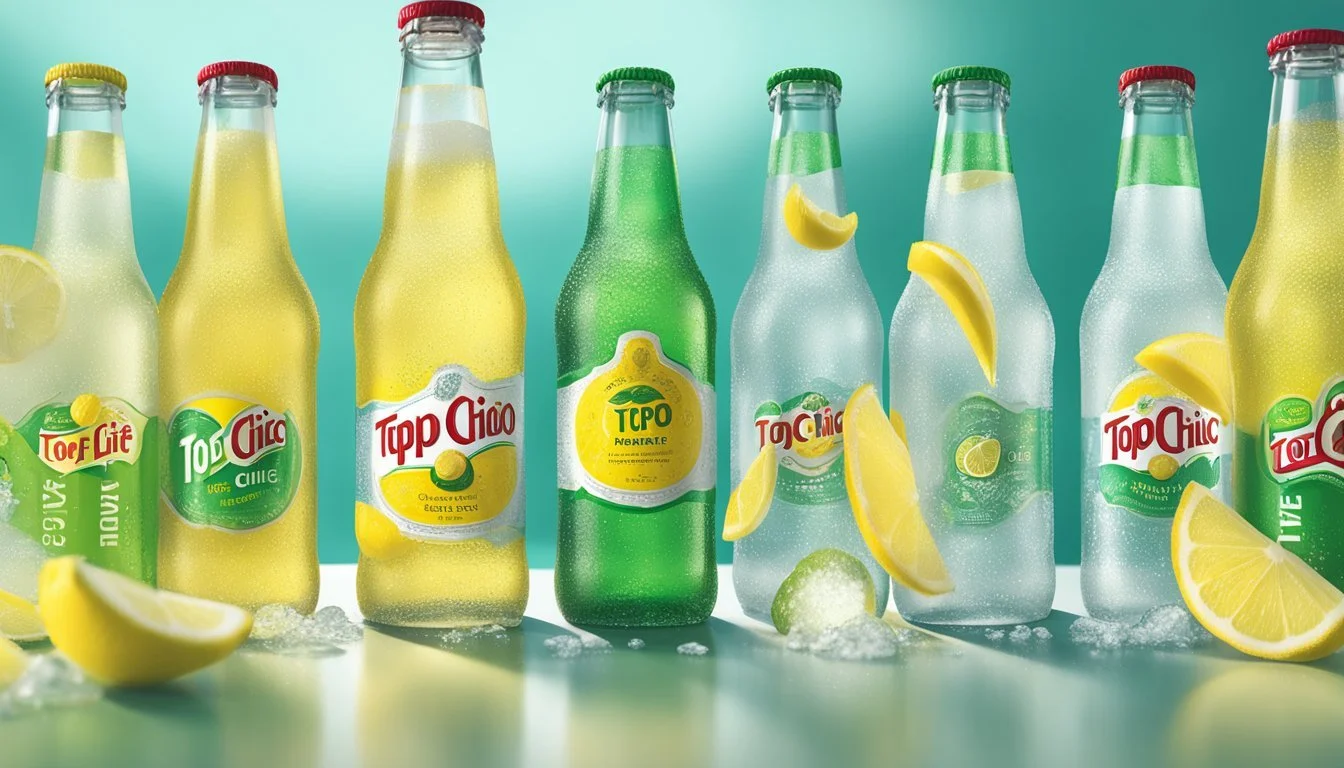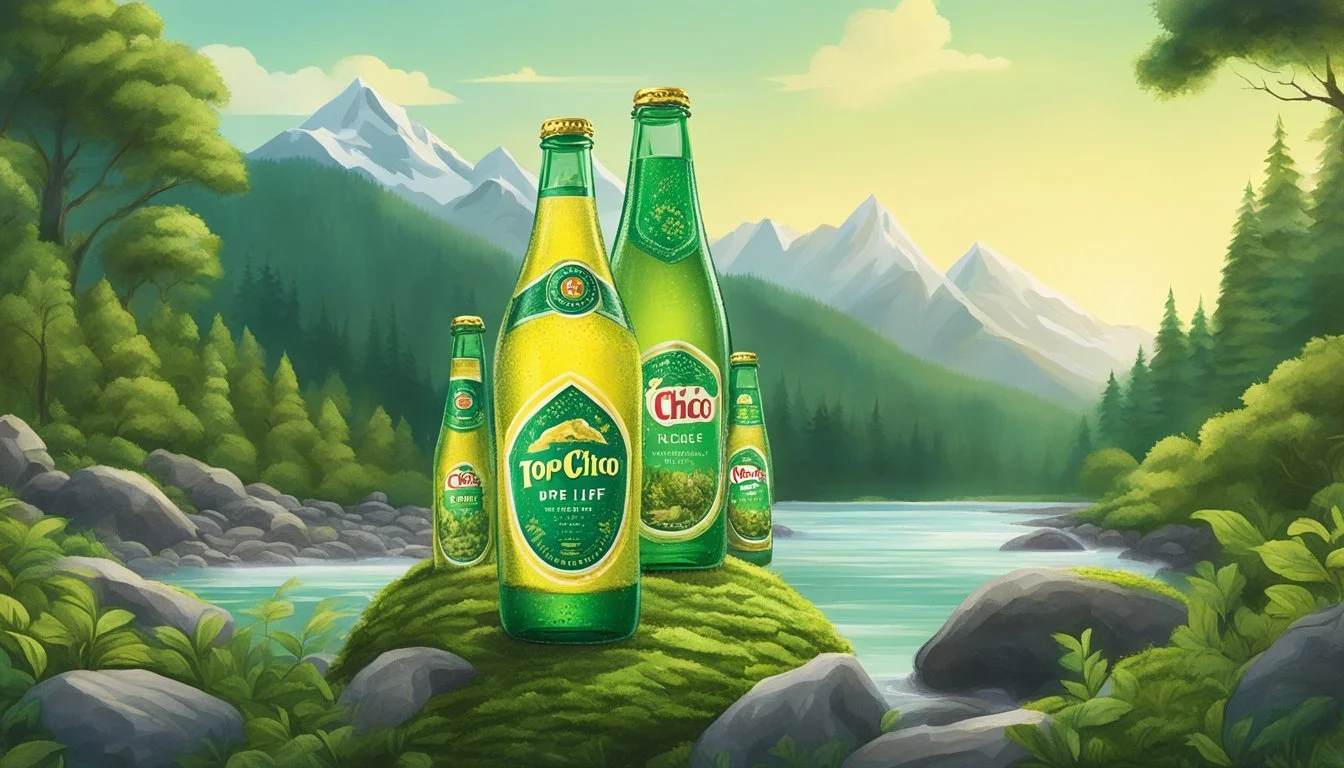Topo Chico vs. Pure Life
Which Bottled Water is Better for You?
Choosing the best bottled water involves understanding various factors such as taste, quality, and sourcing. When comparing Topo Chico and Pure Life, Topo Chico stands out for its unique mineral content and long-standing heritage, being sourced from the Cerro del Topo Chico spring in Monterrey, Mexico since 1895. This gives it a distinct taste that many consumers favor, especially in the carbonated water category.
On the other hand, Pure Life, a product of Nestlé, offers a more standardized purified water option that appeals to those who prefer a consistent, neutral flavor. While Pure Life provides a reliable and accessible choice, it's worth noting that Topo Chico has faced scrutiny over the presence of PFAS chemicals, though efforts have been made to reduce these levels.
Both brands have their merits and cater to different preferences and concerns. For those who prioritize a refreshing, mineral-rich taste, Topo Chico is a top contender, whereas Pure Life is ideal for consumers seeking purified water without the mineral flavors. Readers will find a detailed comparison of these brands’ features, benefits, and potential drawbacks in this article.
Origin and History
Topo Chico and Pure Life have distinct backgrounds that highlight their unique origins and histories. From the ancient springs in Mexico to a global presence, each brand offers a rich storyline that few are aware of.
Topo Chico: A Mexican Legacy
Topo Chico's story begins in Monterrey, Mexico. The brand draws its name from Cerro de Topo Chico, a mountain home to a revered spring. According to local myths, this mineral-rich water has been cherished for centuries for its supposed healing properties.
This historic water was officially bottled in 1895, making Topo Chico one of the oldest mineral waters still available today. Its effervescent quality and natural mineral composition have helped it secure a loyal following, now also spurred by the Coca-Cola Company's acquisition.
The connection to Mexico's cultural heritage is a significant charm for Topo Chico, employing branding elements that reflect its historical roots. The emphasis on traditional practices and natural sourcing has allowed Topo Chico to maintain a reputation for quality and authenticity.
Pure Life: Nestlé's Global Footprint
Nestlé Pure Life was launched in 1998 and quickly became a global brand. The vision was to provide safe, affordable drinking water, establishing a presence in over 40 countries. Nestlé, a Swiss multinational known for diverse consumer products, has expanded Pure Life's reach through rigorous quality standards.
The brand sources water from various springs and municipal supplies worldwide, ensuring stringent purification processes. This broad sourcing strategy has given Pure Life a unique standing as a widely accessible bottled water, emphasizing safety and reliability.
Pure Life's growth reflects Nestlé's extensive distribution network and marketing prowess. This has enabled it to become one of the most recognized bottled water brands. By focusing on affordability and widespread availability, Pure Life has made clean drinking water accessible to millions globally.
Water Composition and Sources
Topo Chico and Nestlé Pure Life stand out in the bottled water market due to their distinct composition and sourcing methods. Understanding these aspects can help consumers make an informed decision based on their preferences for mineral content and the purification process.
Mineral Content Comparison
Topo Chico, a sparkling mineral water, is known for its distinctive mineral composition, primarily featuring calcium, magnesium, and sodium. Its carbonation enhances the natural taste, making it a popular choice for those who enjoy effervescent beverages. The specific amounts of minerals contribute to its unique taste and mouthfeel.
Nestlé Pure Life, on the other hand, is a purified water sourced from various municipal and well supplies. Minerals such as calcium and magnesium are often added back after purification to achieve a consistent flavor profile. It does not naturally contain the same levels of minerals as Topo Chico, making it a more neutral-tasting option.
Mineral Topo Chico (mg/L) Nestlé Pure Life (mg/L) Calcium ~40 ~30 Magnesium ~15 ~10 Sodium ~10 ~5
Sourcing and Purification
Topo Chico is sourced from the Cerro del Topo Chico spring in Monterrey, Mexico, and has been since 1895. This source is naturally rich in minerals, which are preserved during bottling, making it a popular choice for those seeking natural mineral water with a historical touch.
Nestlé Pure Life undergoes a rigorous purification process that includes reverse osmosis and carbon filtration. The water is typically sourced from various municipal supplies, then purified to remove impurities. Minerals are added back to enhance taste. This process ensures a consistent and clean product, appealing to those who prefer purified over natural spring water.
Taste and Flavor Profiles
When considering the taste and flavor profiles of Topo Chico and Pure Life, it's essential to evaluate factors such as carbonation, pH levels, and added flavors like lime and grapefruit.
Evaluating Carbonation and Bubbles
Topo Chico stands out for its high carbonation levels. The intense bubbles provide a sharp, crisp taste that many sparkling water enthusiasts appreciate. Topo Chico’s effervescence elevates its refreshing qualities, making it a popular choice for those who enjoy fizzy drinks.
On the other hand, Pure Life, being a purified water, lacks carbonation altogether. It offers a clean, neutral taste, free from bubbly texture. This makes it a suitable choice for those who prefer still water without any added frills.
The Role of PH in Flavor
The pH level of the water significantly influences its taste profile. Topo Chico, a mineral water, generally has a slightly alkaline pH due to its natural mineral content. This alkalinity can enhance the water's flavor, providing a slightly tangy undertone that complements its carbonation.
Pure Life, a purified water, maintains a neutral pH, ensuring a clean and consistent flavor. Its purity can appeal to those seeking a straightforward, no-nonsense hydration option without the complexity of mineral content affecting taste.
Added Flavors: From Lime to Grapefruit
Topo Chico offers flavored sparkling water options, including lime and grapefruit variants. These flavors are infused subtly, enhancing the natural sharpness of the sparkling water. The lime variant provides a zesty, citrusy kick, while the grapefruit offers a mild bitterness that pairs well with the effervescence.
Pure Life, typically unflavored, also provides options with added flavors but tends to focus on fruit essences without carbonation. Its flavored versions are more subdued, catering to those who prefer lightly infused still water flavors without the fizziness.
Overall, Topo Chico’s bold carbonation and mineral-rich profile contrast with Pure Life’s clean, neutral taste, offering different experiences based on personal preferences for carbonation, pH, and added flavors.
Health and Safety Considerations
When comparing Topo Chico and Pure Life bottled water, it is essential to consider the health and safety implications of each brand. Key areas include PFAS chemical levels, adherence to FDA regulations, and the overall health benefits of the water.
Assessing PFAS Chemical Levels
Per- and polyfluoroalkyl substances (PFAS) are a significant concern in bottled water. Topo Chico has faced scrutiny for having the highest levels of "forever chemicals" among tested brands.
Consumer Reports highlighted that Topo Chico's sparkling water contained elevated PFAS levels, which could pose long-term health risks. Pure Life has been recognized for its efforts to maintain lower PFAS levels, making it a potentially safer option.
FDA Regulations and Consumer Safety
The Food and Drug Administration (FDA) regulates bottled water to ensure consumer safety. Both Topo Chico and Pure Life must comply with FDA standards for contaminants like arsenic, lead, and mercury.
Topo Chico, bottling in glass, may mitigate risks related to plastic leaching, whereas Pure Life adheres strictly to FDA limits to ensure lower contaminant levels.
Stringent checks help protect consumers, but ongoing vigilance is crucial.
Hydration and Health Benefits
Both Topo Chico and Pure Life provide substantial hydration benefits, a critical aspect of overall health. Pure Life boasts purity and mineral content, supporting hydration needs efficiently.
Topo Chico, known for its mineral-rich composition, can offer additional health benefits such as improved digestion and electrolyte balance. However, potential PFAS concerns may affect the perceived safety of these health benefits. Consumers should weigh the balance between mineral content and chemical exposure when choosing between these brands.
Environmental Impact and Sustainability
The environmental impact of bottled water brands like Topo Chico and Pure Life involves several critical elements such as packaging materials, carbon footprint from production processes, and waste management practices. Evaluating these components enables a comprehensive understanding of their sustainability efforts.
Packaging: Glass vs. Plastic Bottles
Topo Chico is often packaged in glass bottles, while Pure Life typically comes in plastic bottles.
Glass bottles are reusable and recyclable, often preferred for their lower environmental impact when properly recycled. They also tend to preserve the taste of carbonated water better.
Plastic bottles are lighter, reducing transportation emissions, but pose significant challenges in recycling. Pure Life uses PET plastic, which is recyclable but often ends up in landfills due to low recycling rates.
Choosing between glass and plastic involves weighing the benefits of glass's recyclability against the lighter weight and transport efficiency of plastic.
Carbon Footprint of Production
Topo Chico and Pure Life differ in their production processes, significantly impacting their overall carbon footprint.
Topo Chico uses a natural carbonation process and sources its water from a single spring in Monterrey, Mexico. This standardized production method aims to reduce emissions but involves transportation over long distances.
Pure Life sources water from multiple locations, potentially shortening distribution distances but increasing variability in their production practices. The energy-intensive process of manufacturing plastic bottles further adds to their carbon footprint.
Efforts by both brands to reduce emissions include investing in renewable energy and optimizing logistical efficiency to minimize their environmental impact.
Recycling and Waste Management
Recycling practices and waste management significantly influence the sustainability of bottled water brands.
Topo Chico’s use of glass promotes better recycling outcomes. Glass is infinitely recyclable, and many regions have well-established systems for collecting and processing used glass bottles.
Pure Life faces challenges with plastic waste. Although PET plastic is recyclable, the actual rates of recycling are much lower. Initiatives like using recycled PET and promoting consumer recycling behavior are crucial.
Both brands are working to enhance their waste management practices. Topo Chico focuses on refillable programs, while Pure Life emphasizes the development of circular economies for plastics.
Consumer Experience and Accessibility
Topo Chico and Nestlé Pure Life differ significantly in their accessibility and consumer experiences. Key aspects to consider include market availability, price comparison, and community engagement.
Market Availability and Distribution
Topo Chico has an extensive distribution network, especially notable in the southern United States, including Texas. Sourced from Monterrey, Mexico, it has built a strong presence, particularly after its acquisition by Coca-Cola.
Nestlé Pure Life, on the other hand, boasts a broader global reach, owing to Nestlé's extensive market infrastructure. It is available on Amazon and various retail stores worldwide, ensuring easy access for consumers.
Price Comparison and Value
When it comes to pricing, Nestlé Pure Life is often more competitively priced, making it an economical option for everyday drinking water. Its affordability is underscored by frequent discounts and bulk purchase options, such as those found on Amazon.
Topo Chico, positioned as a premium sparkling water, tends to be more expensive. Its unique mineral content and branding contribute to this higher price point, appealing to consumers seeking a more luxurious drinking experience.
Community and Cult Following
Topo Chico enjoys a distinct cult following, often associated with the trendy beverage Ranch Water, a popular cocktail in Texas. Its longstanding heritage, dating back to 1895, has created a loyal customer base drawn to its unique taste and historical roots.
In contrast, Nestlé Pure Life focuses on accessibility and reliability rather than cultivating a niche community. While it may lack the same level of passionate fans, its widespread availability and affordability keep it a staple for many households globally.
More About Topo Chico
More About Pure Life
Cascade Mountain vs Pure Life: Which Bottled Water is Better?
Hawaii Volcanic vs Pure Life: Which Bottled Water is Better?
Hawaiian Springs vs Pure Life: Which Bottled Water is Better?
Icelandic Glacial vs Pure Life: Which Bottled Water is Better?
Nestle Pure Life vs Pure Life: Which Bottled Water is Better?
Pure Life vs Kirkland Signature: Which Bottled Water is Better?
Pure Life vs Whole Foods 365: Which Bottled Water is Better?
Richard's Rainwater vs Pure Life: Which Bottled Water is Better?
Solan de Cabras vs Pure Life: Which Bottled Water is Better?
Talking Rain AQA vs Pure Life: Which Bottled Water is Better?
Whole Foods Italian Still Mineral water vs Pure Life: Which Bottled Water is Better?






